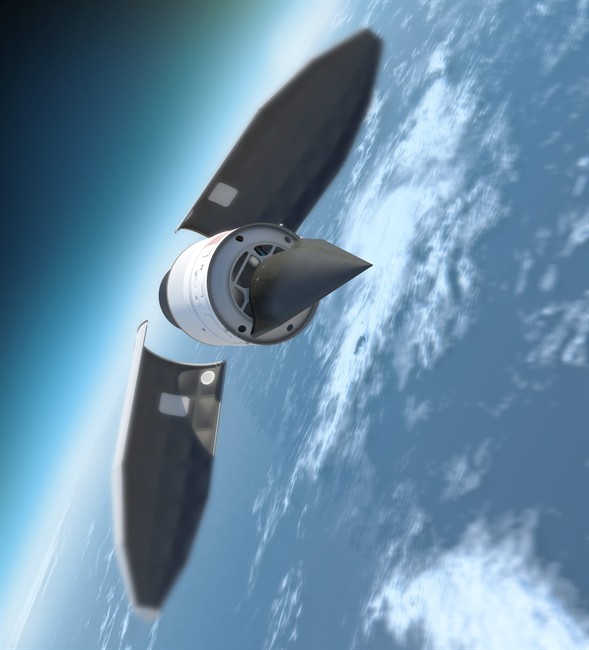LOS ANGELES, Calif. – The U.S. Defence Advanced Research Projects Agency says contact with its experimental hypersonic glider was lost after launch from Vandenberg Air Force Base on the central California coast.

The agency says in Twitter postings that its unmanned Falcon Hypersonic Technology Vehicle-2 was launched Thursday atop a rocket, successfully separated from the booster and entered the mission’s glide phase.

Get daily National news
The agency says telemetry was subsequently lost, but released no details.
A similar vehicle was launched last year and returned nine minutes of data before contact was prematurely lost.
The small aircraft is supposed to manoeuvr through the atmosphere at 13,000 mph (21,000 kph) before intentionally diving into the ocean.
The U.S. military is trying to develop technology to respond to threats around the globe at speeds of Mach 20 or greater.








Comments